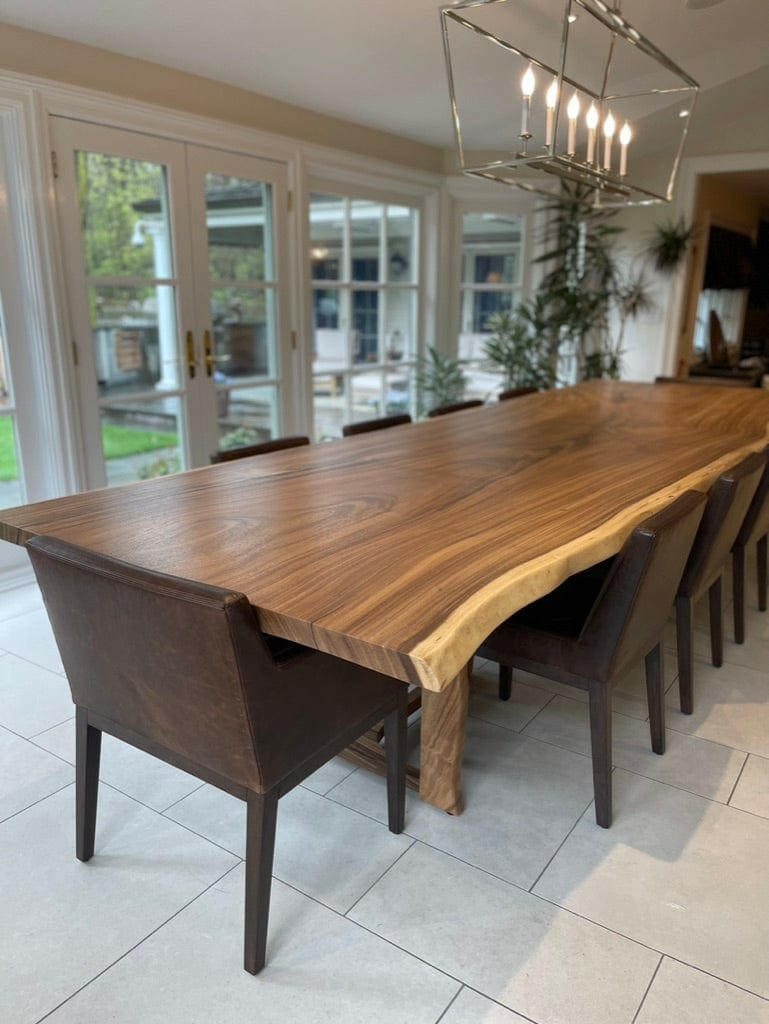Dining Room Table Legs That Combine Capability and Modern Design
Dining Room Table Legs That Combine Capability and Modern Design
Blog Article
Dining Table Legs: Exactly How to Select the most effective Designs for Your Room
Choosing the right table legs is essential for both aesthetic and practical consistency in your dining space. Whether your space flaunts a streamlined, modern-day ambiance or leans towards an extra typical atmosphere, the style of the legs can significantly affect the total appearance. Conical legs exhibit contemporary sophistication, while turned legs provide a nod to classic beauty. Past style, the material-- be it cozy timber or sleek steel-- plays an essential function in establishing the tone. But exactly how do you make certain these aspects match your existing decor while providing the necessary stability? The solution depends on a balanced method.
Examining Your Dining-room Design
Exactly how do you identify the most effective eating table legs for your space? The answer begins with a thorough evaluation of your dining-room design. A cohesive design makes certain that your table legs boost the total aesthetic rather than encounter existing components. Beginning by observing the building functions of your eating area. Are there popular characteristics such as exposed beam of lights, complex moldings, or minimal lines? These details usually determine whether a standard, rustic, modern, or industrial design is most suitable.
Following, consider the existing furniture and decor. The materials, colors, and appearances within the space play a crucial duty. A dining space with streamlined, modern chairs and metallic accents may profit from straightforward, structured table legs. On the other hand, a room loaded with classic pieces and rich materials could ask for ornate, sculpted legs.
Huge, open eating rooms can accommodate larger, more considerable legs, whereas smaller sized rooms require even more delicate, inconspicuous layouts. By meticulously assessing these factors, you can select eating table legs that sympathetically mix with your eating room's design.
Popular Leg Styles Clarified

One prevalent style is the conical leg, renowned for its sleek, modern appearance. This leg narrows from top to bottom, offering a minimal allure suitable for modern and Scandinavian interiors. Next off, the transformed leg attributes intricate spindle-like designs, commonly discovered in traditional and farmhouse settings. These legs include a touch of workmanship and elegance.
Cabriole legs, with their unique curves, are associated with French Provincial and Queen Anne furniture. Their elegant, streaming lines bring a sense of class and historical appeal (dining room table legs). For those favoring a durable and uncomplicated style, square legs give sturdy support and a clean, geometric appearance, perfect for commercial or minimalist rooms
Finally, barrette legs provide a retro, mid-century contemporary vibe. Made from steel, these legs are both lightweight and solid, adding an unique aesthetic contrast to wood table tops. Recognizing these styles will certainly direct you in selecting dining table legs that enhance your area's aesthetic and performance.
Material Considerations

Wood is a timeless alternative, understood for its heat and versatility. It comes in numerous types such as oak, walnut, and maple, each offering distinct grain patterns and colors. Steel legs, frequently made from stainless steel, iron, or light weight aluminum, give a modern and commercial appearance while making certain durable support. They are normally more immune to damage, making them a sturdy choice.

Other products like bamboo or rattan supply green options, bringing an all-natural and loosened up ambiance to the eating location. Each product has its advantages and disadvantages, and the finest option will certainly depend on your details demands and choices.
Harmonizing Visual Appeals and Capability
Attaining the ideal balance in between appearances and functionality is crucial when choosing eating table legs. While the visual charm of table legs can dramatically improve the total setting of an eating space, their functional aspects can not be ignored. The design of the legs should harmonize with the room's décor, yet they ought to likewise provide adequate support and security for the table.
Think about the architectural design of your area. Sleek, modern interiors might gain from minimalist, metal legs that use a tidy and inconspicuous look. On the various other hand, conventional settings frequently match turned or carved wood legs that include a touch of sophistication and class.
Functionality includes the security and sturdiness of the legs. As an example, trestle legs, recognized for their robustness, can offer solid assistance for bigger tables, making them perfect for families or regular performers. dining room table legs. On the other hand, pedestal legs can supply more legroom and adaptability, enabling far better seating setups
Furthermore, the elevation and positioning of the legs are essential for comfy eating. Legs positioned too much internal might restrain seating, while those also near to the edge can limit motion. Therefore, thoughtful factor to consider of both visual and practical aspects is vital for an ideal dining experience.
Customization and DIY Options
Modification opens a world of possibilities for developing dining table legs that are distinctly tailored to your preference and needs. Certain layout aspects, such as transformed legs, tapered shapes, or complex carvings, can be integrated to mirror your design.
For those inclined in the direction of diy (DIY) jobs, developing customized eating table legs supplies both a rewarding experience and the chance to attain a bespoke visual. DIY enthusiasts can source basic materials and use woodworking or metalworking devices to craft legs that fulfill accurate specifications. Furthermore, many on-line tutorials and workshops give guidance, making the process much more available for novices.
Eventually, whether going my site with specialist personalization or starting a do it yourself venture, the ability to tailor eating table legs makes certain that the end product balances with Click This Link your interior design vision, enhancing both capability and visual charm.
Conclusion
Choosing the suitable dining table legs requires mindful consideration of the overall style of the eating area, including existing architectural functions and furniture. Inevitably, the selected table legs should complement the design, supplying both visual charm and sensible support.
Report this page